Guimaraes
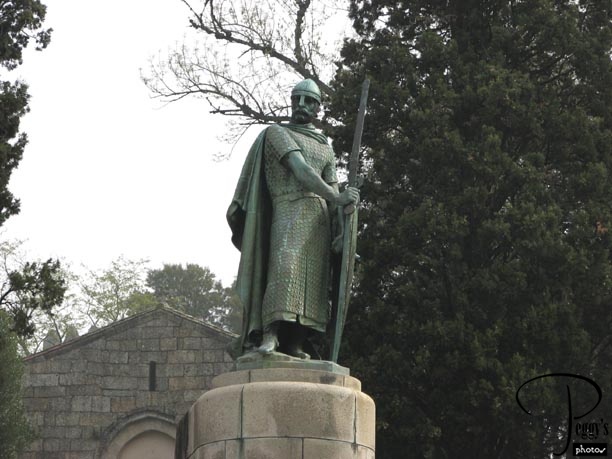
We left Porto in rainy weather to drive inland and north to the town of Guimaraes. We had no rain for the rest of the day. We were met in Guimaraes by the statue of Afonso Henriques, the first king of Portugal (1139–85).

Guimaraes
Guimaraes
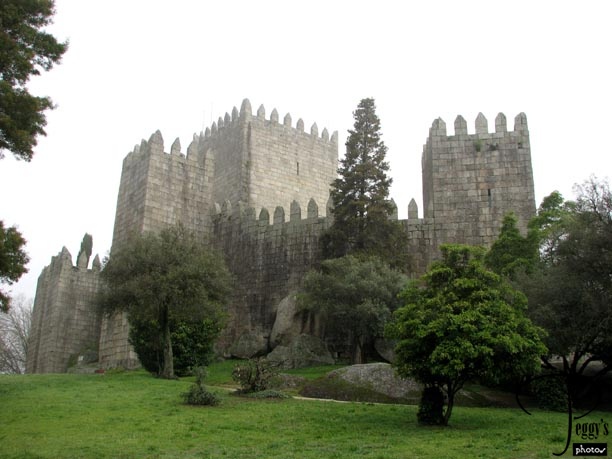
The Castelo de Guimaraes, built in the 10th century to ward off invasions by the Moors and the Normans. When Afonso Henriques became king, he named Guimaraes as his capital. Hence, Guimaraes is known as the “Birthplace of the Nation” or as the “Cradle of Portugal.”

Guimaraes
Guimaraes
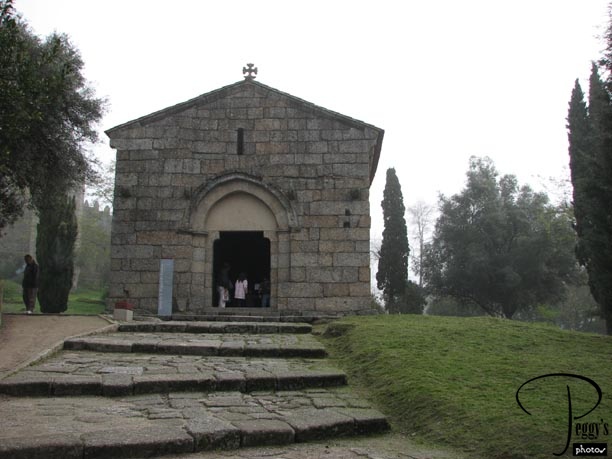
Afonso Henriques was born in this castle and legend has it that he was baptized in the Chapel of Sao Miguel on the castle grounds, pictured here.

Guimaraes
Guimaraes
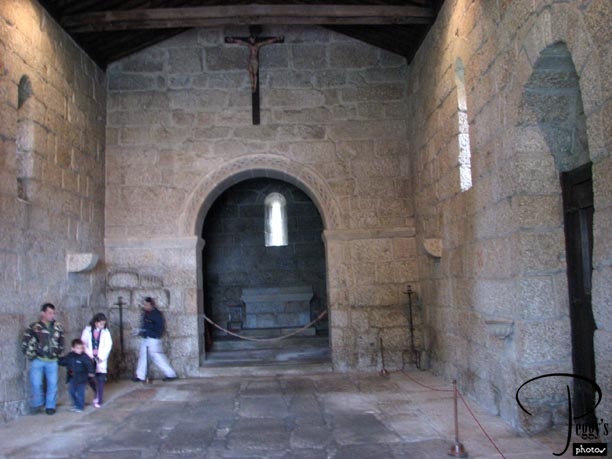
At the back of the chapel is the burial font that he was supposed to be baptized in.

Guimaraes
Guimaraes
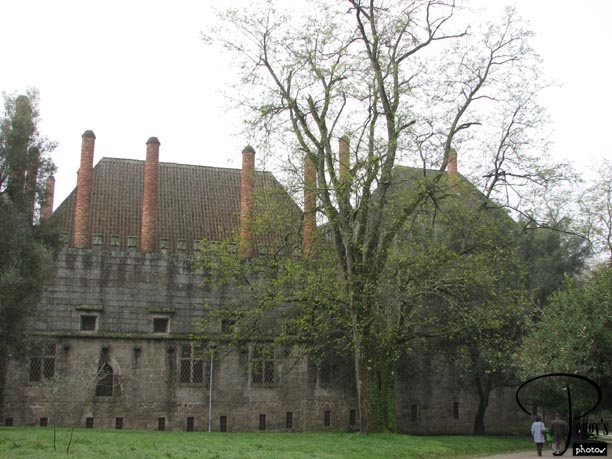
The Paco dos Duques on the castle grounds, built in the 15th century. It fell into disrepair and in 1933 was renovated under Salazar and became the official resident of the president. It is now a museum.

Guimaraes
Guimaraes
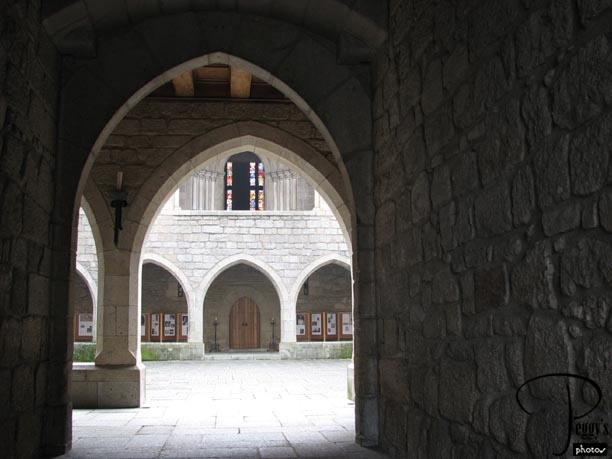
View through one of its arches.

Guimaraes
Guimaraes
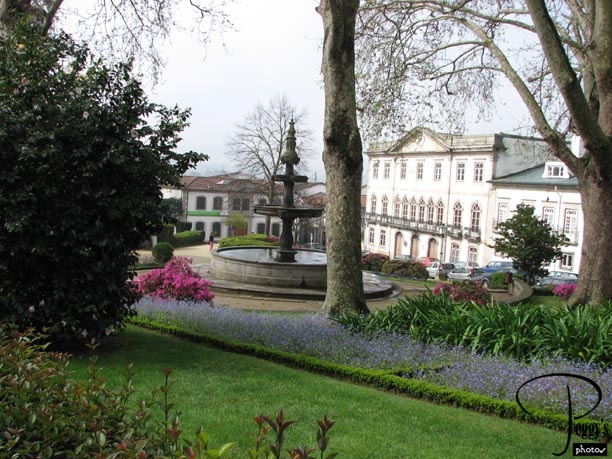
A square outside the castle grounds.

Guimaraes
Guimaraes
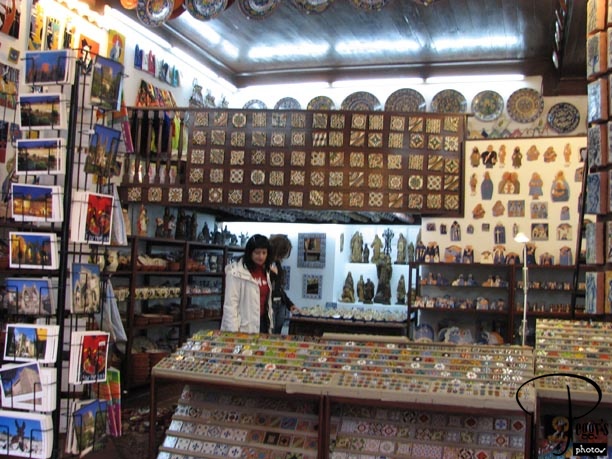
Souvenir store on the square.

Guimaraes
Guimaraes
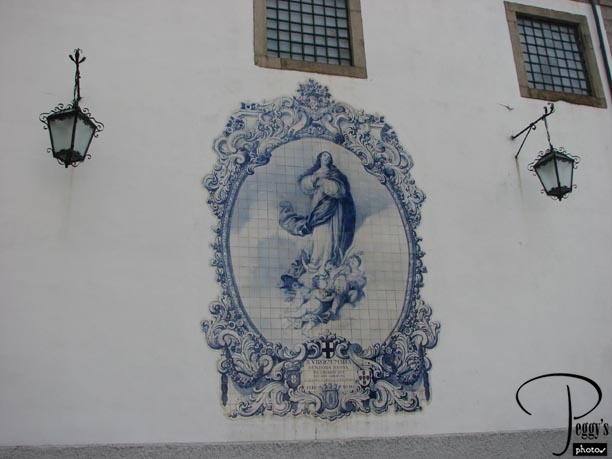
Tile mural on one of the houses on the square.

Guimaraes
Guimaraes
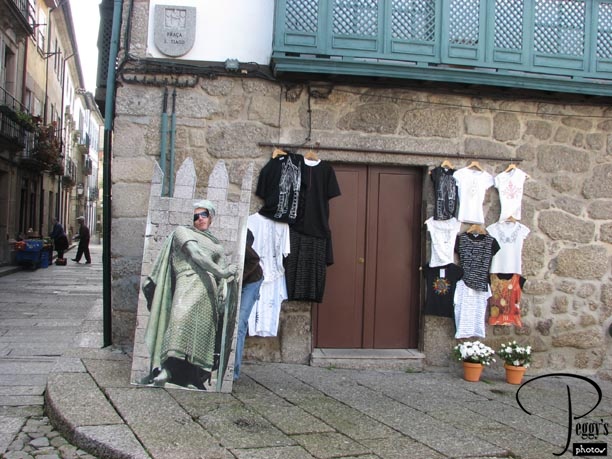
A cutout you can stand behind to get your photo taken to look like a crusader.

Guimaraes
Guimaraes
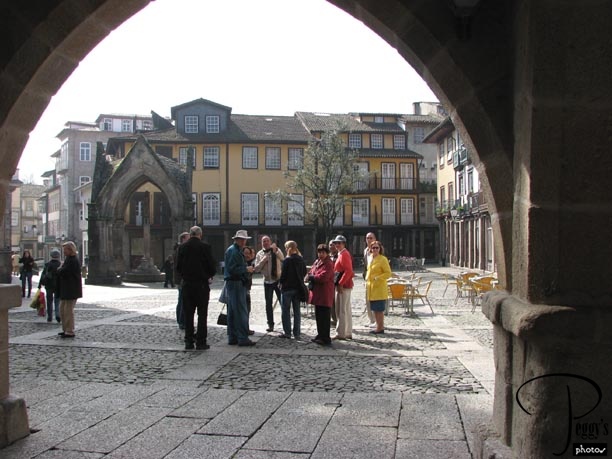
Largo da Oliveira and my tour group. Why are they all looking at me? I think I was supposed to there listening to Rui, not taking photos.

Guimaraes
Guimaraes

The Largo da Oliveira had four very interesting sides: on one side, the building from where I had taken the last photo.

Guimaraes
Guimaraes
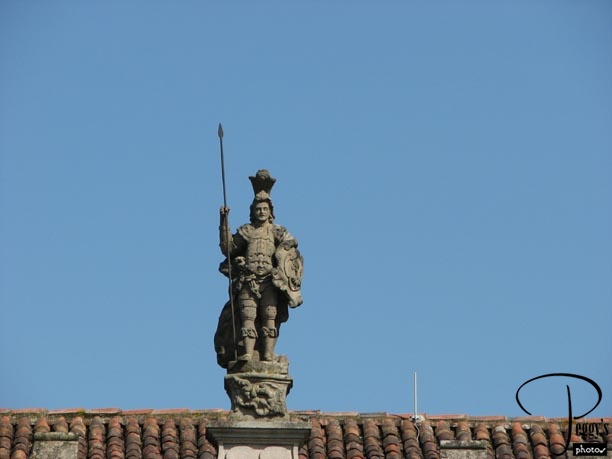
Close–up of the statue on top of the building.

Guimaraes
Guimaraes
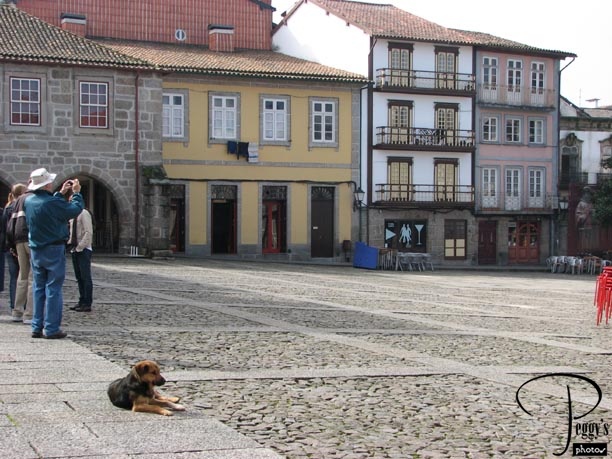
Buildings across from the building with the arches at its bottom.

Guimaraes
Guimaraes
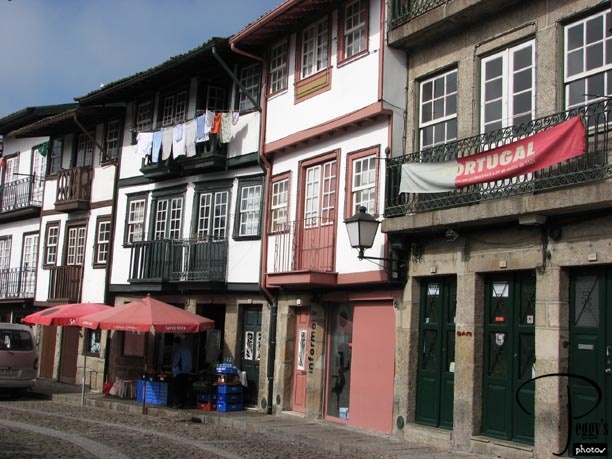
Buildings to the right of the previous buildings.

Guimaraes
Guimaraes
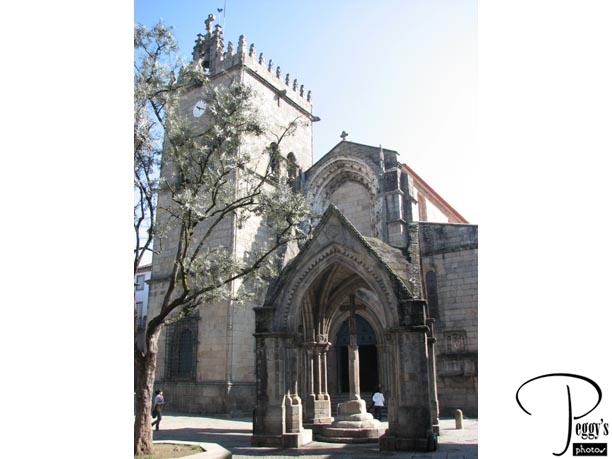
And across from the last buildings, the Nossa Senhora da Oliveira, a former monastery founded by King Afonso Henrique and restored by King Joao I in thanks to Our Lady of the Olive Tree for his victory at Ajubarrota against the Castilians. The tower is from 1515.

Guimaraes
Guimaraes
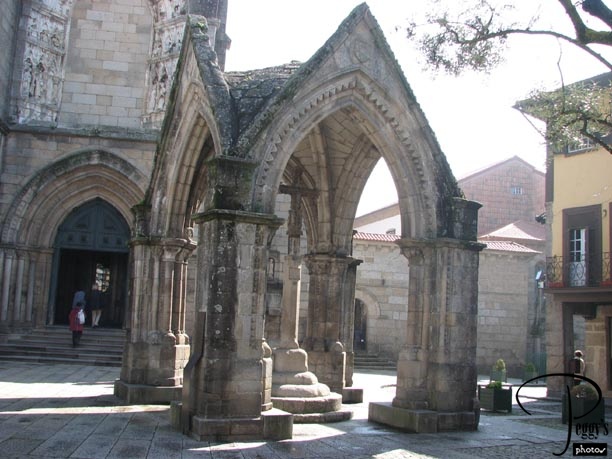
In front of the monastery is the 14th–century Gothic shrine of Padrao do Salado. Legend says that an olive tree was replanted in the middle of it to supply oil for the altar lamp but the tree withered. A cross was placed where the tree was and then the tree flourished. The olive tree here today was planted in 1985.

Guimaraes
Guimaraes
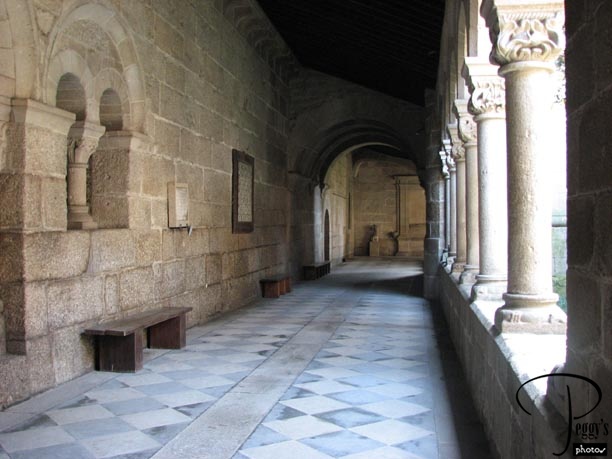
Inside the monastery.

Guimaraes
Guimaraes
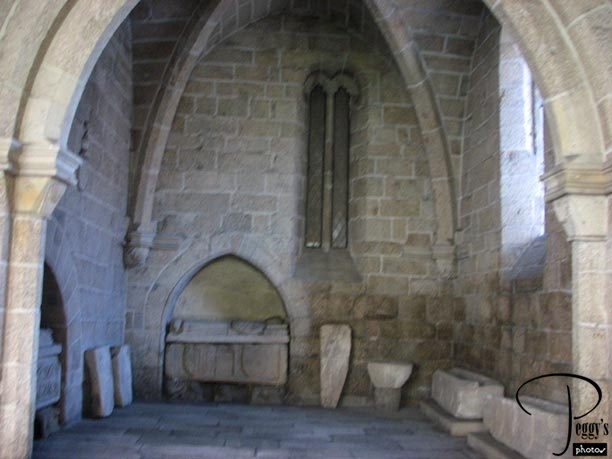
Also inside the monastery.

Guimaraes
Guimaraes
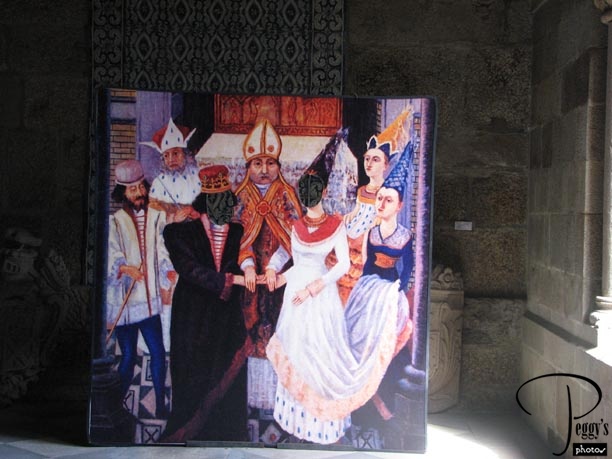
An advertisement for a monastery exhibit, I believe.

Guimaraes
Guimaraes
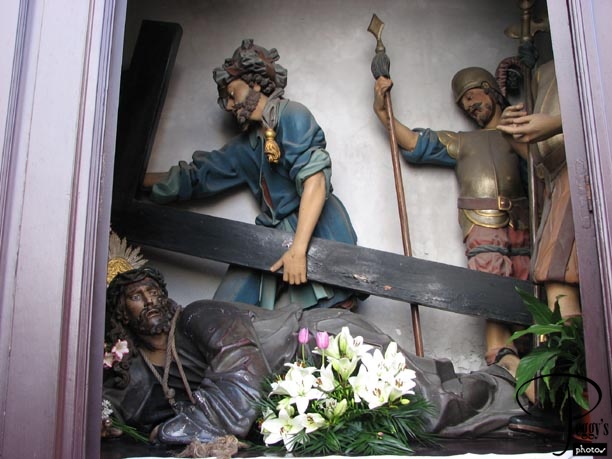
The Stations of the Cross of the Nossa Senhora da Oliveira are displayed in various areas in the town rather than in the monastery itself. One of the Stations of the Cross.

Guimaraes
Guimaraes
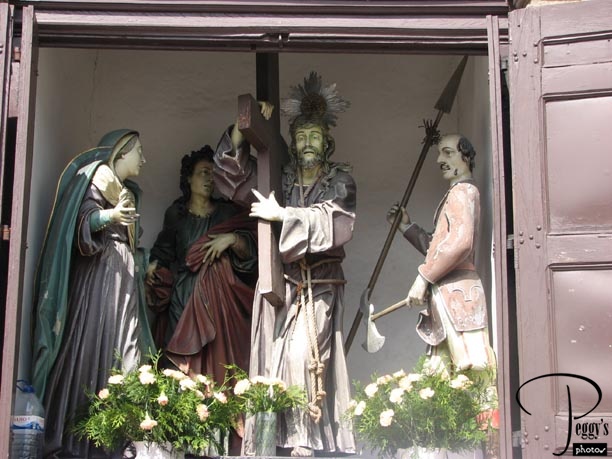
Another of the Stations of the Cross.

Guimaraes
Guimaraes
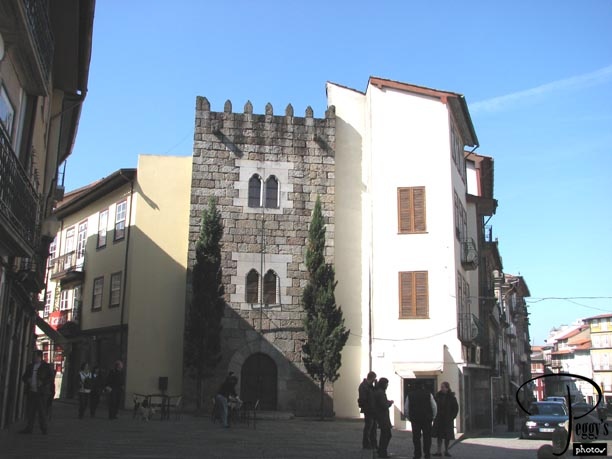
I walked on a street off the opposite side of the square from the monastery. Part of the old city wall incorporated into more modern buildings.

Guimaraes
Guimaraes
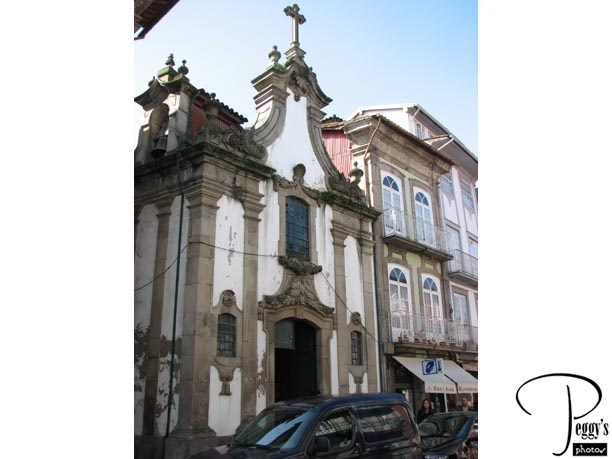
A church.

Guimaraes
Guimaraes
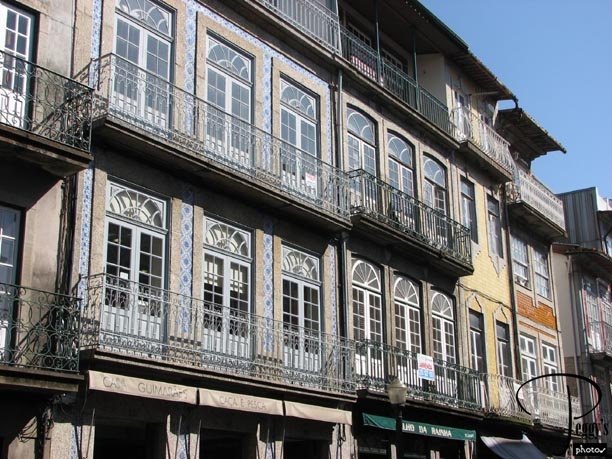
Tiled building.

Guimaraes
Guimaraes

Modern Crusader statue.

Guimaraes
Guimaraes
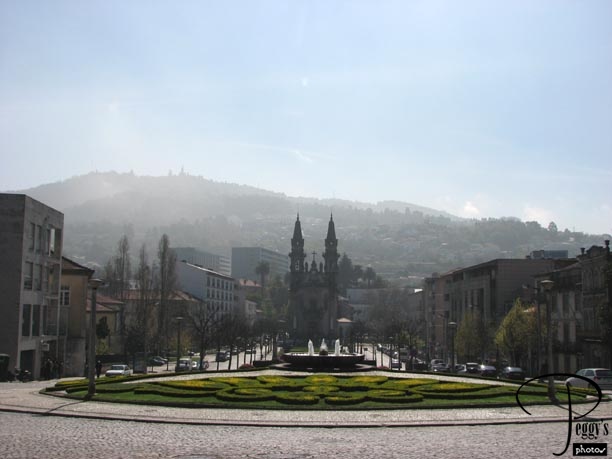
I backtracked to the monastery to another opening in the square to view the Gothic Church of Sao Francisco, built in 1400 and reconstructed in the 18th century. It is a beautiful view from the top of the street but the sun was right behind it and it was difficult to get a good photo of it.

Guimaraes
Guimaraes
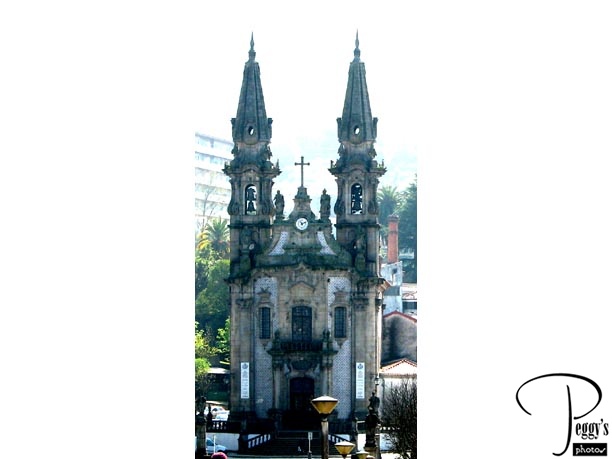
The best photo I could get of the church.

Guimaraes
Guimaraes
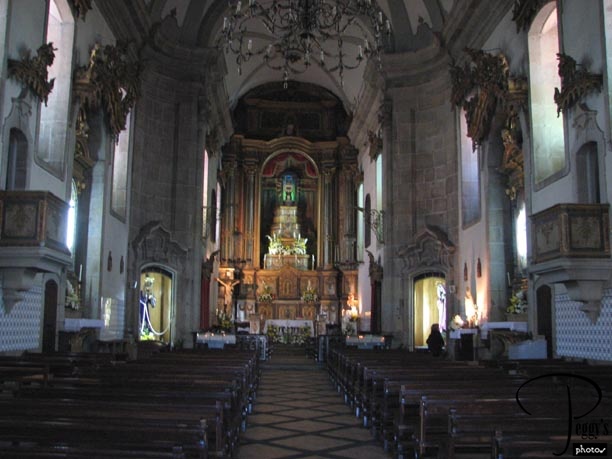
Inside the church.

Guimaraes
Guimaraes
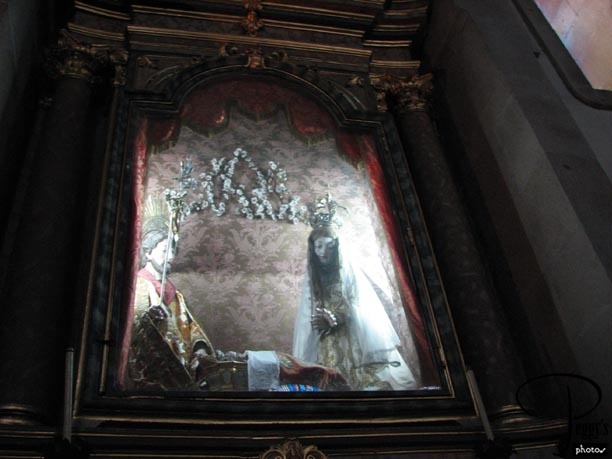
Inside the church.

Guimaraes
Guimaraes
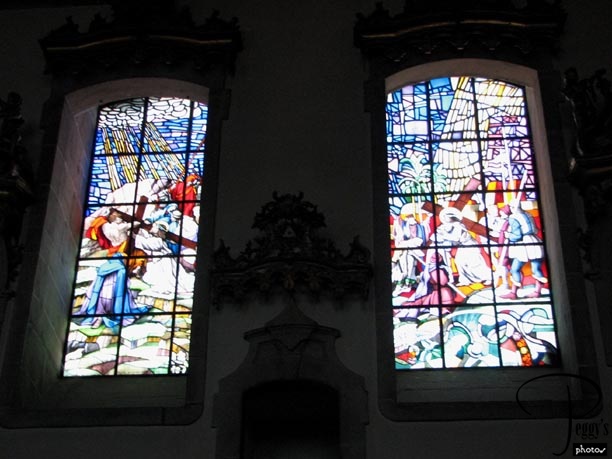
Stained–glass windows.

Guimaraes
Guimaraes
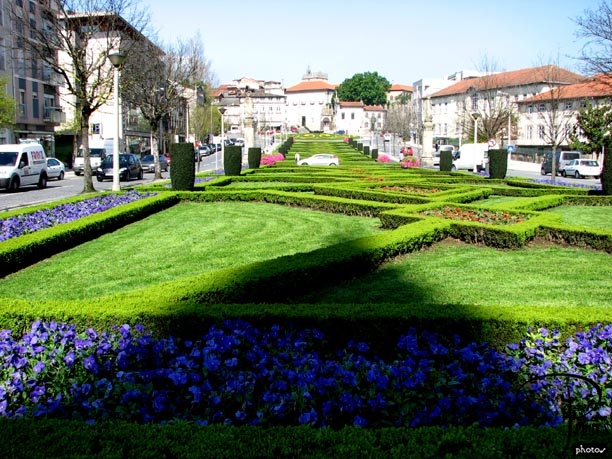
Looking up the hill from the steps of the church.

Guimaraes
Guimaraes
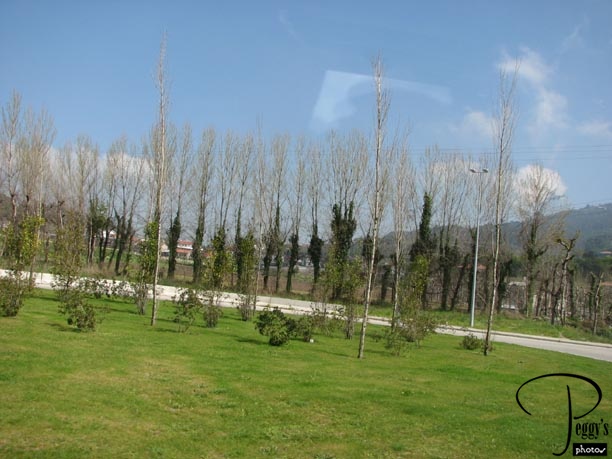
A vineyard outside the town. Here the grape vines grow up the trees. Rui said that he had a group of Italians on a tour and they said they had never seen grapes grown this way.

Guimaraes
On the Road
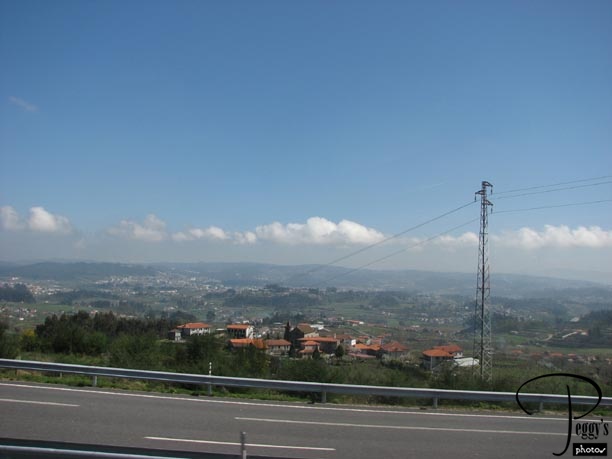
We are now heading east and south to Amarante.

On the Road
Amarante
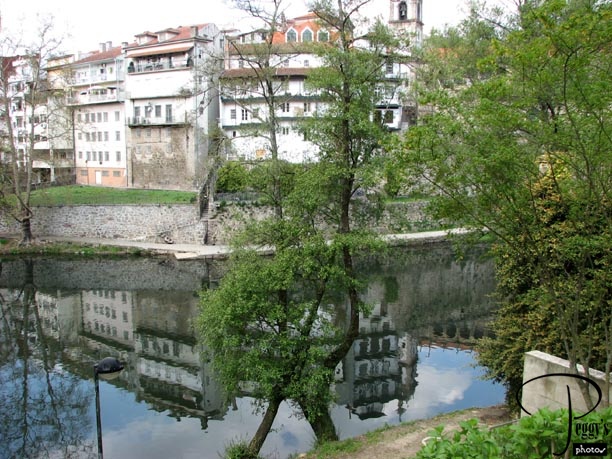
We stopped in Amarante to eat lunch. One thing I particulary liked about the Globus tour was eating our lunch in small towns rather than in a road cafe. Photo of buildings reflected in the Tamega River.

Amarante
Amarante
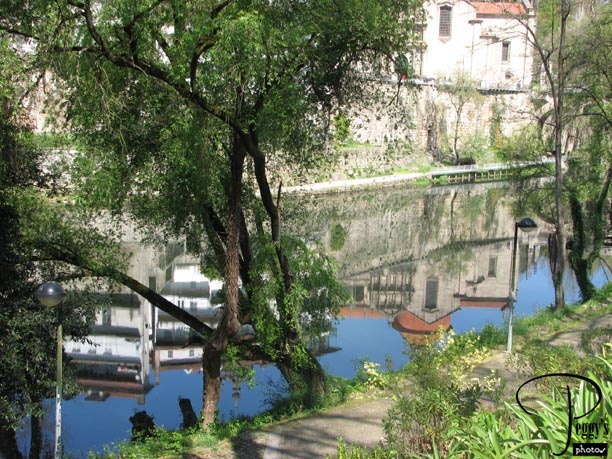
House and the cathedral reflected in the river.

Amarante
Amarante
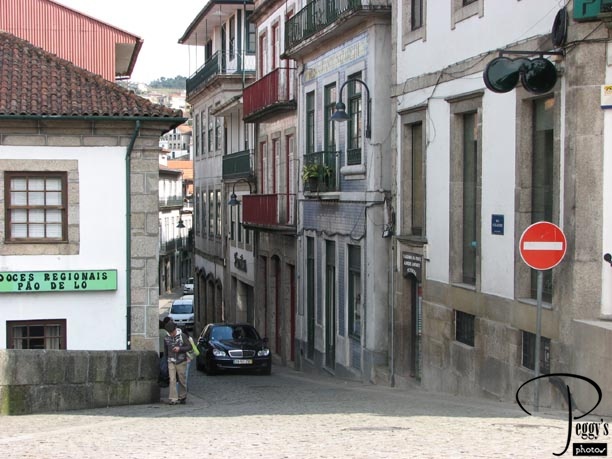
Most of my tour group followed Rui down this street to have a restaurant meal.

Amarante
Amarante
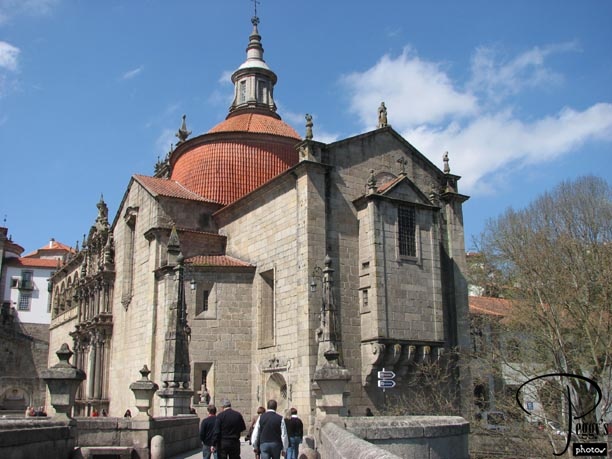
Instead, I walked over the Ponte de Sao Goncalo to the 16th–century Igreja de Sao Goncalo.

Amarante
Amarante
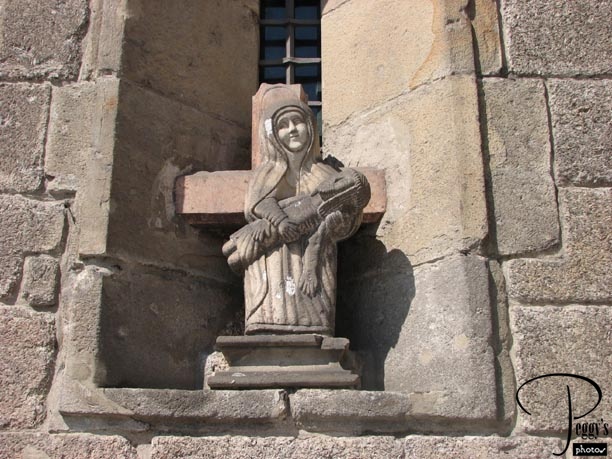
A different Madonna and Child on the side of the church.

Amarante
Amarante
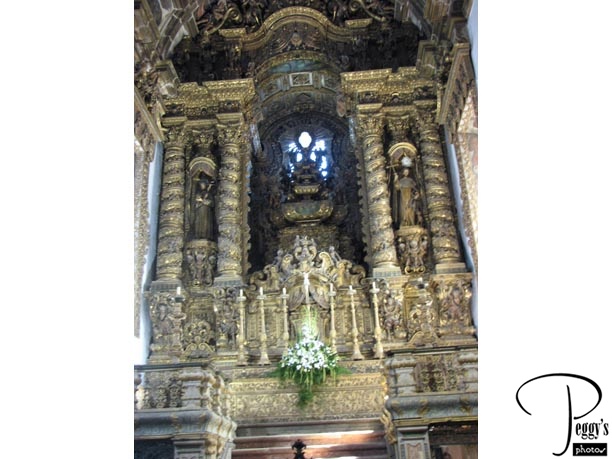
Inside the church.

Amarante
Amarante
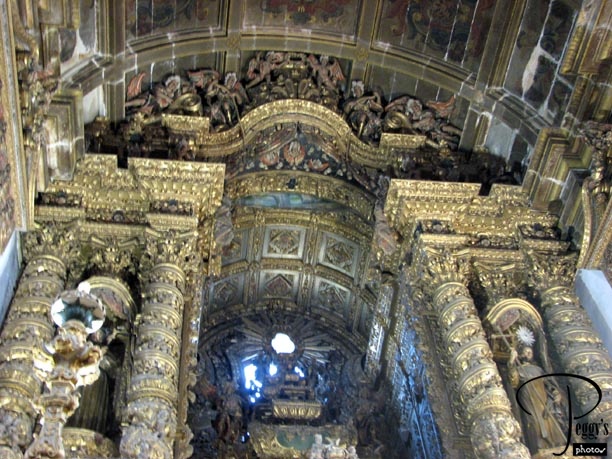
Inside the church.

Amarante
Amarante
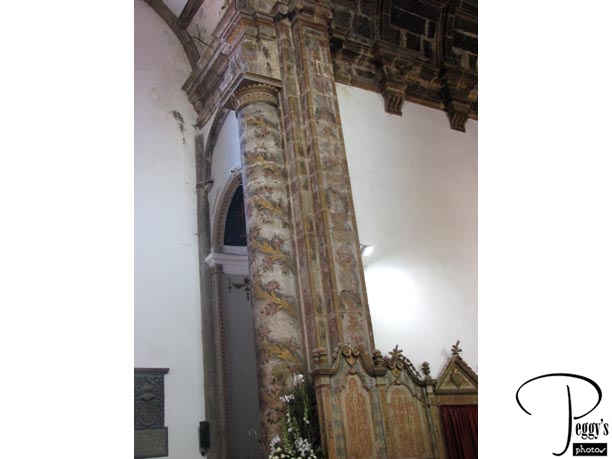
Columns inside the church.

Amarante
Amarante
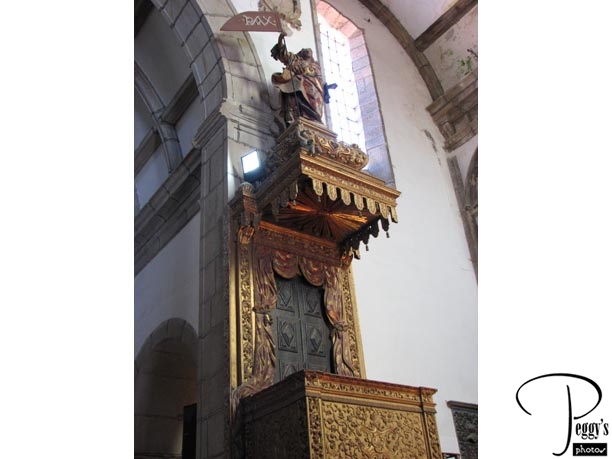
Inside the church.

Amarante
Amarante
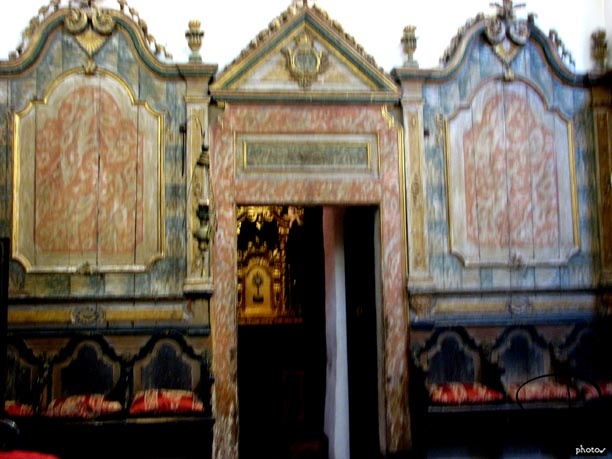
Also inside the church.

Amarante
Amarante
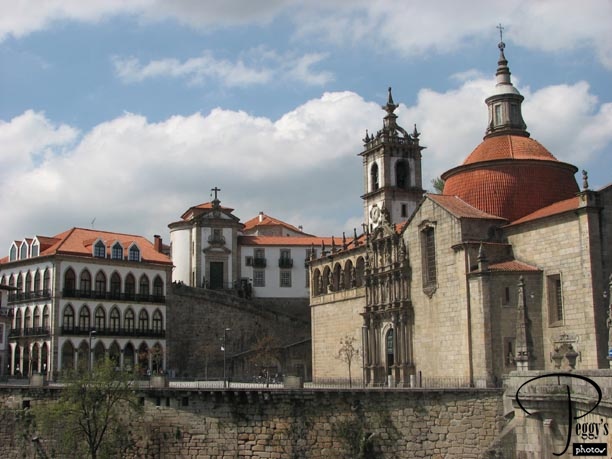
I ate lunch at a cafe in front of the building on the left: delicious tuna sandwich, okay empandas, two coffees with milk served in a glass, and regional cake that was almost all sugar but still good, and a bottle of water––10 euros with tip. Before eating, I looked for a store that sold tape and bubble wrap that I could put around the bottles of port that I had bought. I should have asked Rui how to say these words in Portuguese because my sign language for bubble wrap was not understood. But I did find tape on a shelf, so bought several rolls of it.

Amarante
Amarante
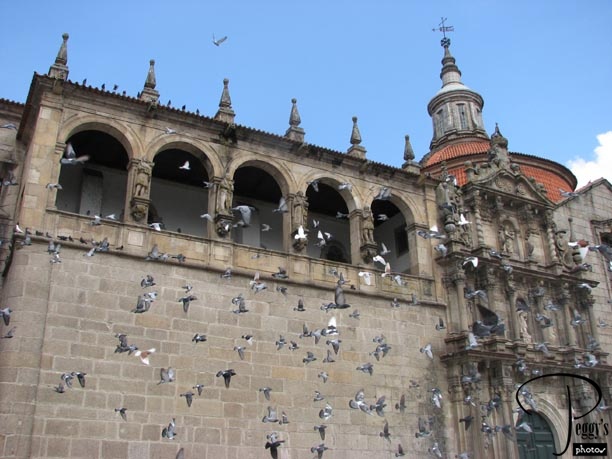
While I was eating, I watched hundreds of pigeons flying from the church…

Amarante
Amarante
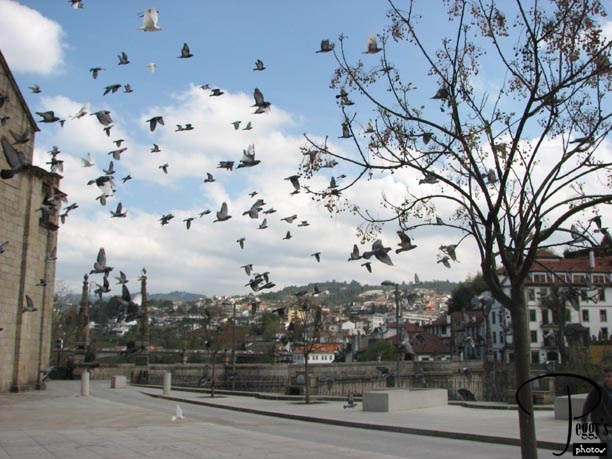
Across the square…

Amarante
Amarante
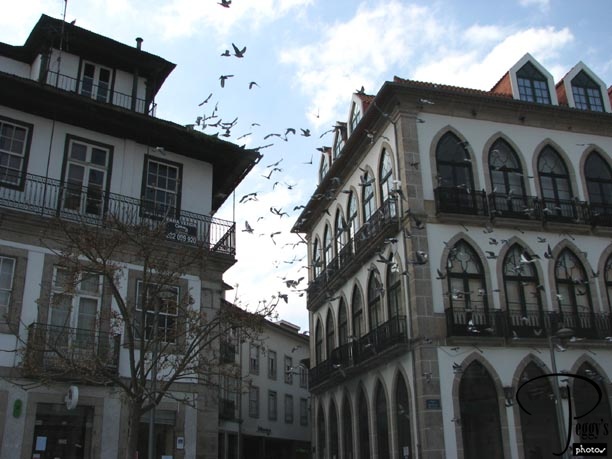
To the buildings across the square and then back across the square to the church over and over again.

Amarante
Amarante
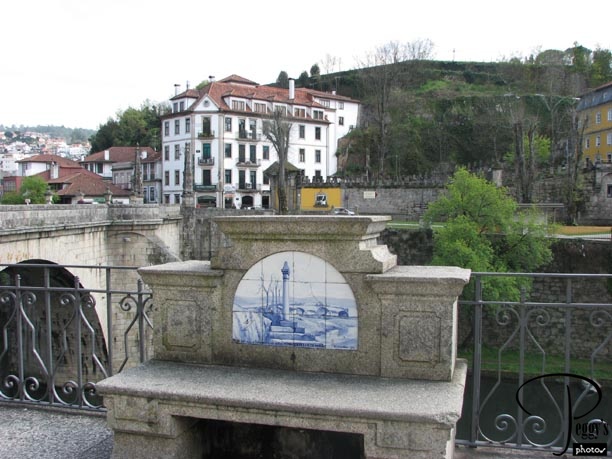
Seen on my way back to the bus.

Amarante
On the Road
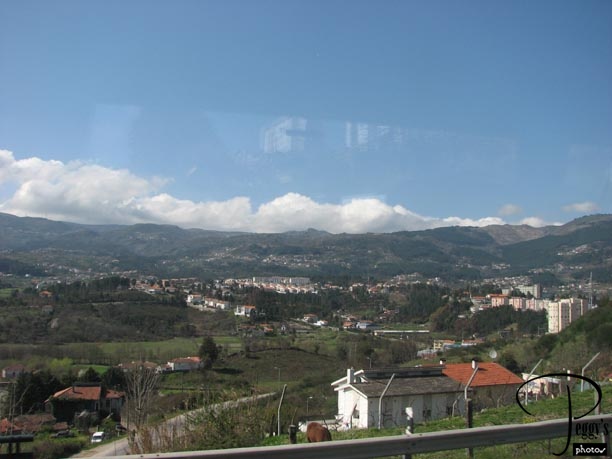
We are back on the road, heading to Vila Real.

On the Road
Palacio de Mateus
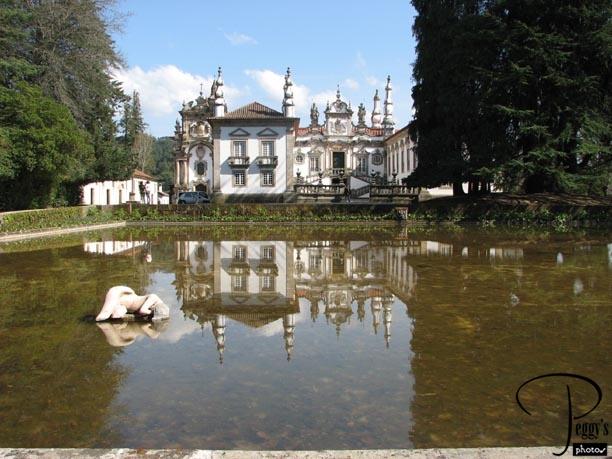
We stopped next at the Palacio de Mateus, outside Vila Real, a Baroque manor house built in the early 18th century by Antonio Mourao. His descendants still live in it and offer residencies to new artists. We were “accosted” here by very loud popping noises, sounding like shots. Were these to greet us, frighten us, or something else? Actually, they were dud fireworks being set off in practice for some next–day town event.

Palacio de Mateus
Palacio de Mateus
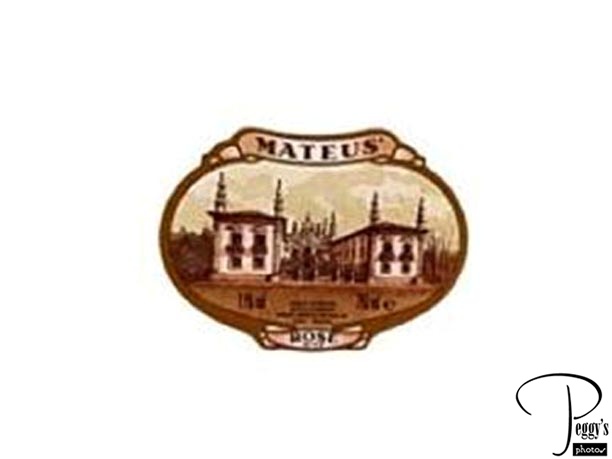
You might recognize the Palacio de Mateus as it appears on the label of the Mateus rose wine––on the label, the house appears without the tree on the right of the last photo.

Palacio de Mateus
Palacio de Mateus
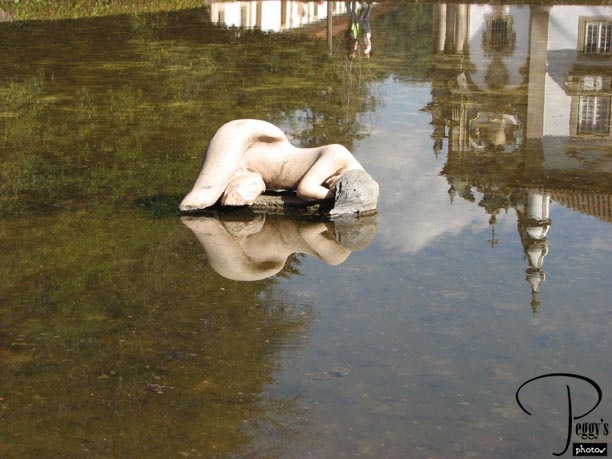
Close–up of the statue in the water. If the water level were higher, it wouldn’t be noticed that she is missing the bottom of her legs, so I don’t think she is supposed to have them.

Palacio de Mateus
Palacio de Mateus
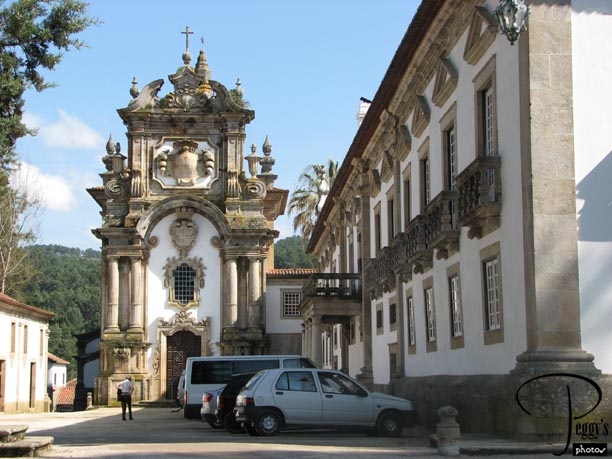
One side of the palacio.

Palacio de Mateus
Palacio de Mateus
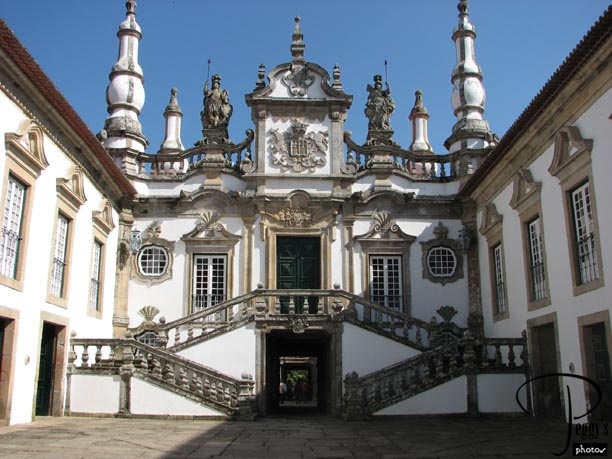
The middle of the palacio.

Palacio de Mateus
Palacio de Mateus
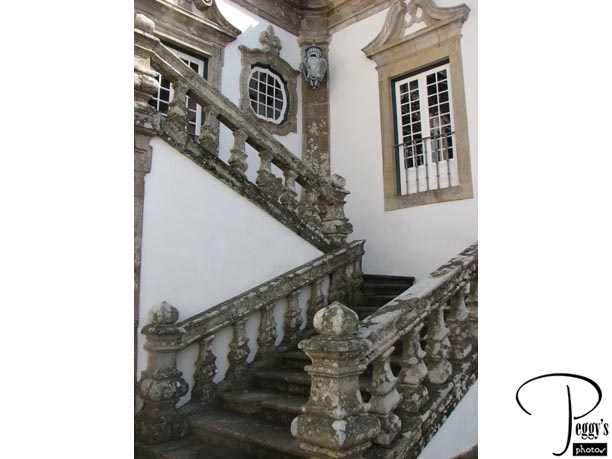
Staircase.

Palacio de Mateus
Palacio de Mateus
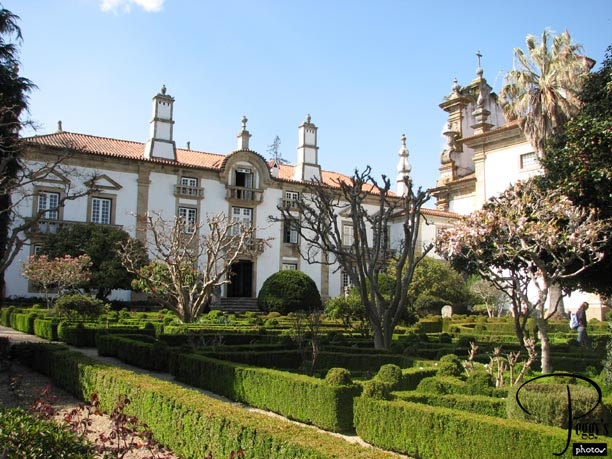
The back of the palacio and its gardens.

Palacio de Mateus
Palacio de Mateus
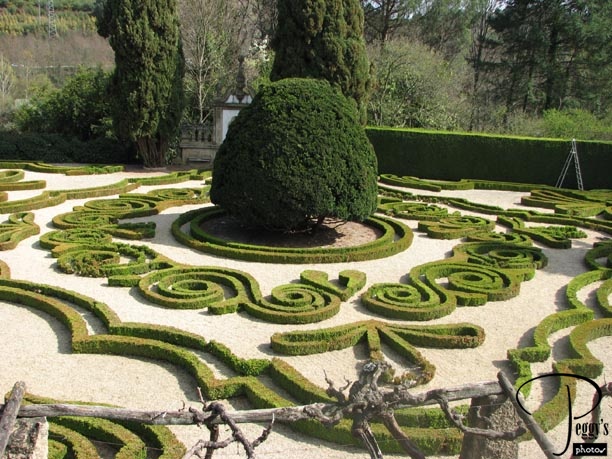
More of its gardens.

Palacio de Mateus
Palacio de Mateus
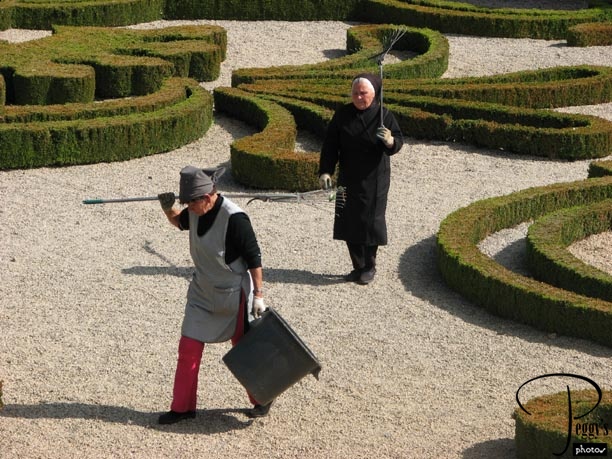
The gardeners.

Palacio de Mateus
Palacio de Mateus
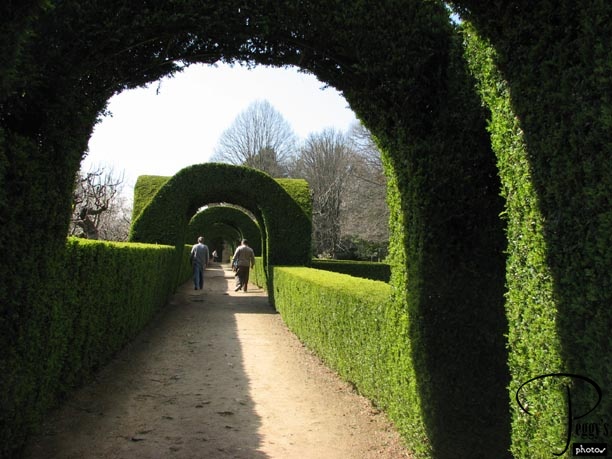
The Cedar Tunnel from cedars planted in 1941. I didn’t walk through all of the cedars, but the tunnel is supposed to be 115 feet long and 25 feet high.

Palacio de Mateus
Palacio de Mateus
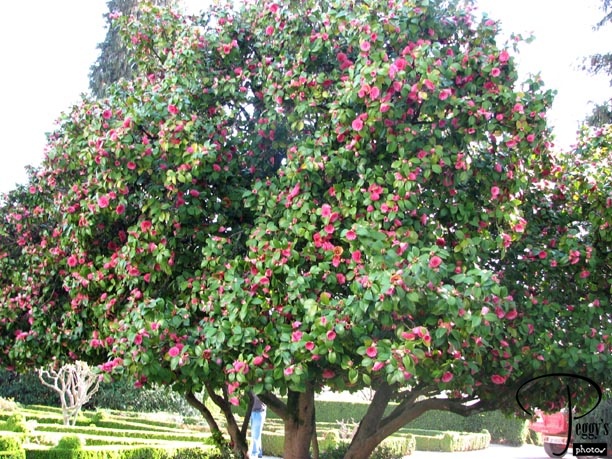
The biggest camellia I have ever seen.

Palacio de Mateus
Palacio de Mateus
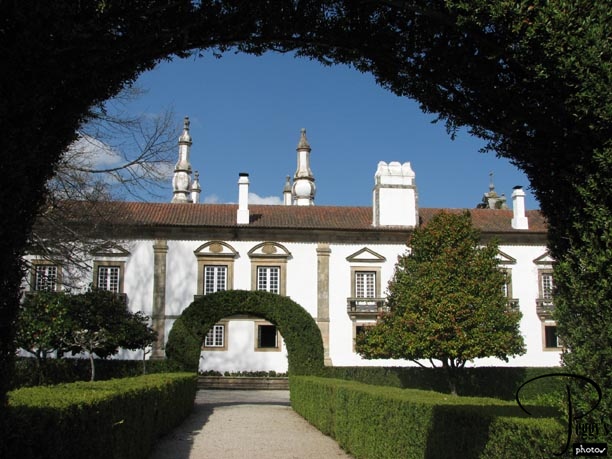
Looking at the palacio through a cedar arch.

Palacio de Mateus
Duoro Valley
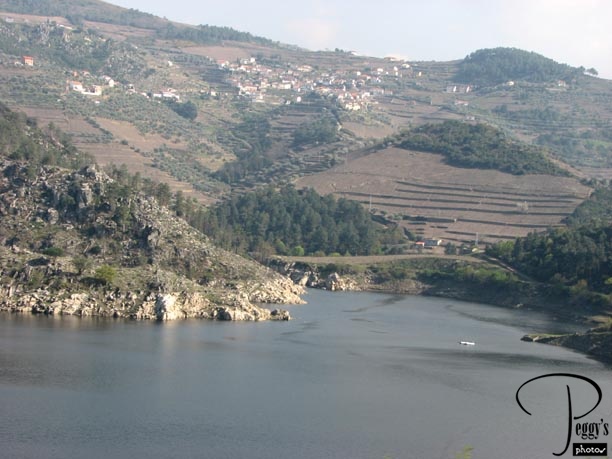
We are on the road again, traveling south to Viseu, through the Duoro Valley. This is the major grape–growing region in Portugal. The best way to see the valley is on a riverboat.

Duoro Valley
Duoro Valley
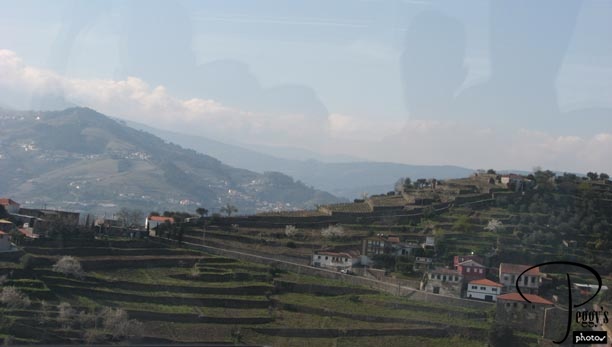
More of the Duoro Valley.

Duoro Valley
Duoro Valley
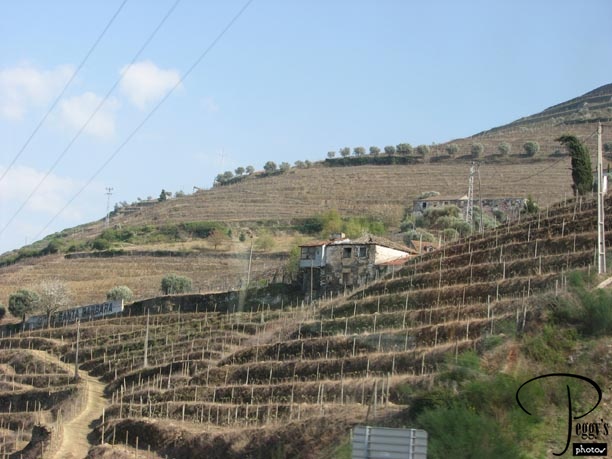
More of the Duoro Valley.

Duoro Valley
Viseu
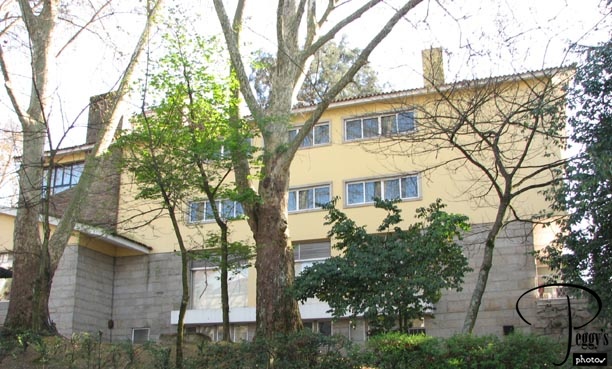
We have arrived at our hotel, the Grao Vasco, in Viseu, our last stop of the day. The hotel was plain on the outside but nice inside.

Viseu
Viseu
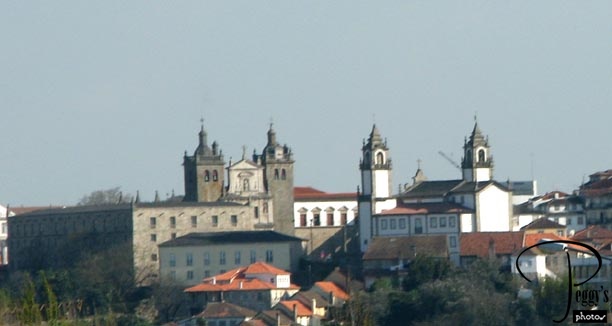
We had enough free time before dinner at our hotel to do some exploring. We could walk from our hotel up the hill to these two churches facing each other––photo taken from the bus coming into Viseu.

Viseu
Viseu
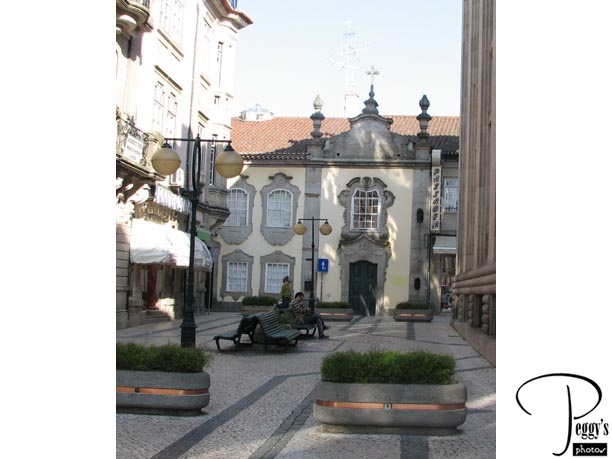
Buildings seen on my walk to the two churches.

Viseu
Viseu
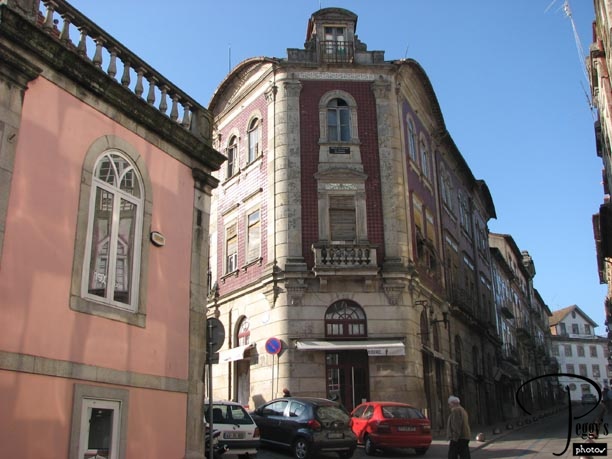
More interesting buildings.

Viseu
Viseu
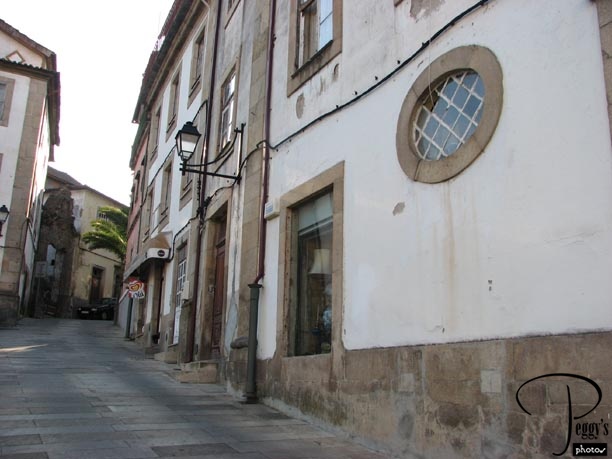
Still climbing up the hill.

Viseu
Viseu

A tiled building.

Viseu
Viseu
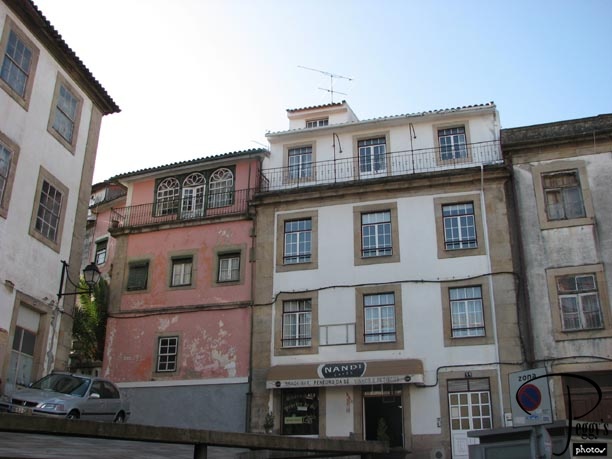
More buildings.

Viseu
Viseu
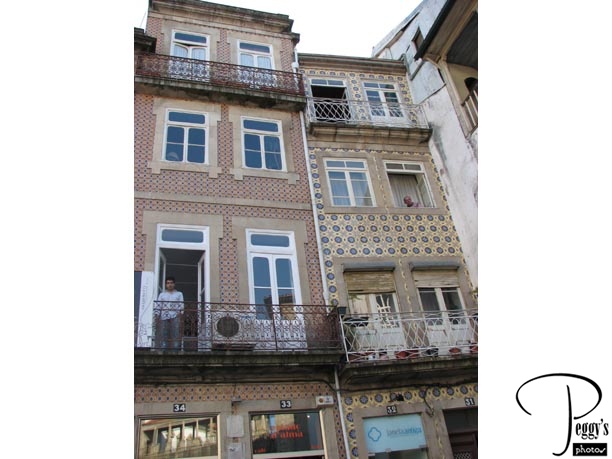
More tiled buildings.

Viseu
Viseu
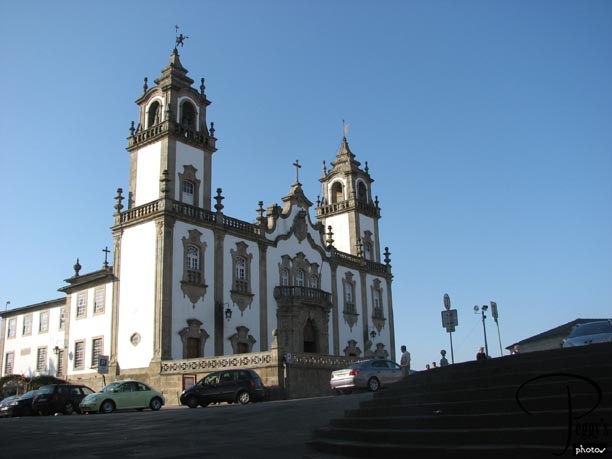
At the top of the hill is the majestic 18th–century Rococo facaded Igreja da Misericordia.

Viseu
Viseu
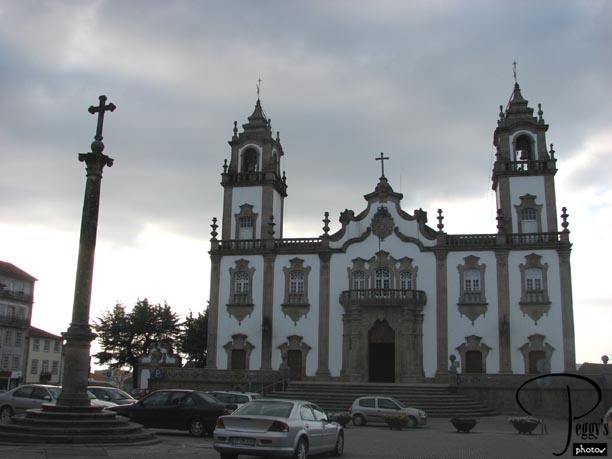
Front view.

Viseu
Viseu
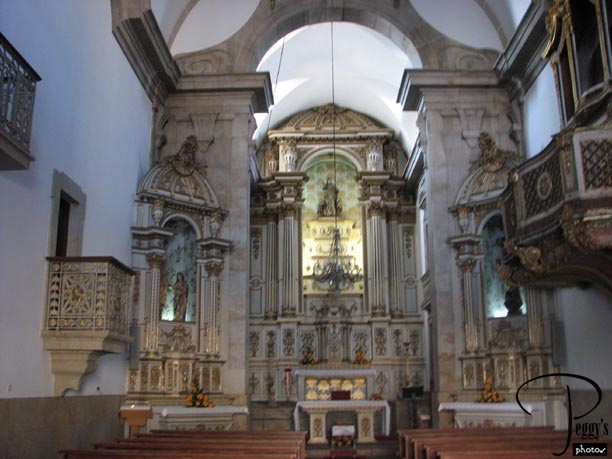
Inside the church.

Viseu
Viseu
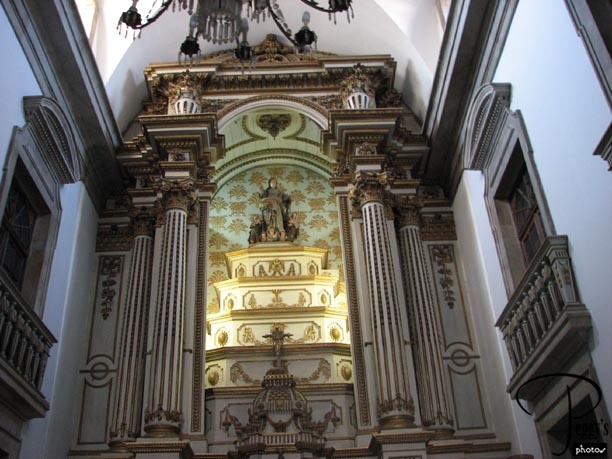
Also inside the church.

Viseu
Viseu
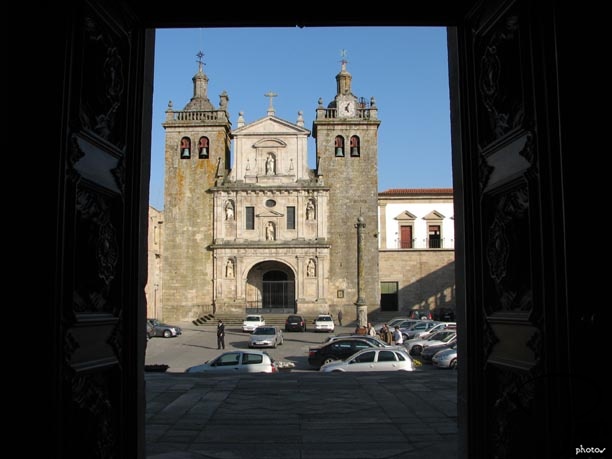
Right across the square from the Igreja da Misericordia is the Se (cathedral) of Viseu, here seen through the door of the Igreja da Misericordia.

Viseu
Viseu
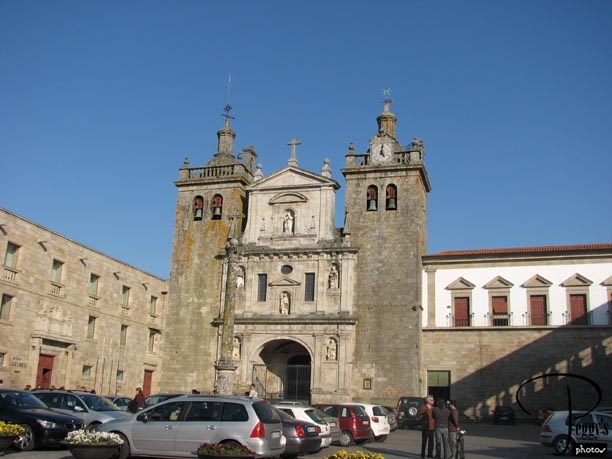
Wider view of the Se.

Viseu
Viseu
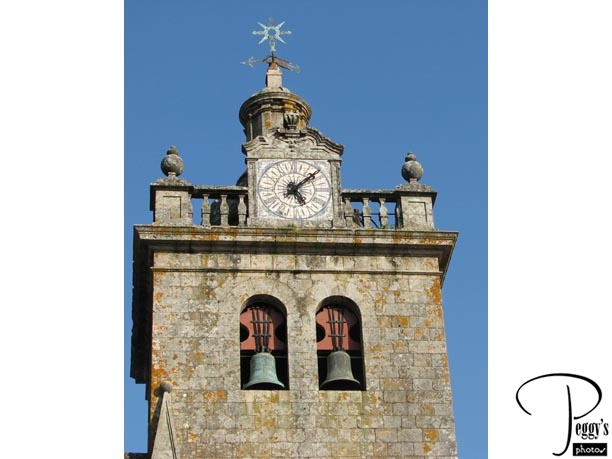
Its clock has the correct time.

Viseu
Viseu
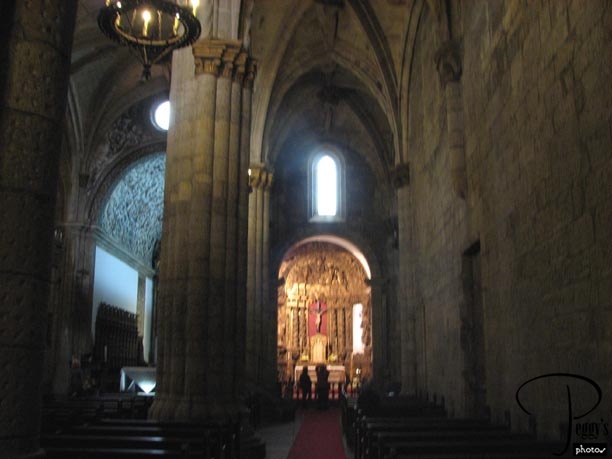
Inside the Se.

Viseu
Viseu
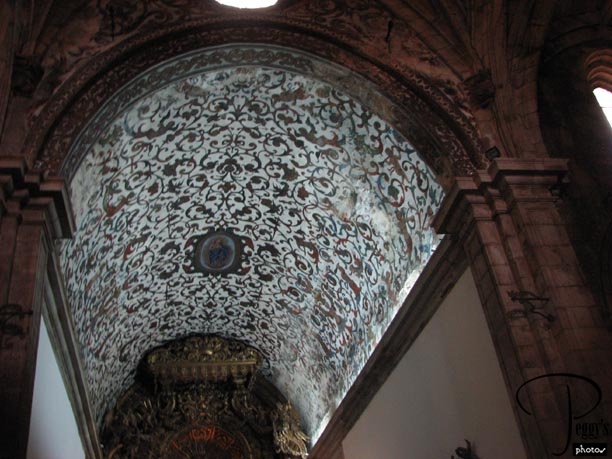
Decorative ceiling.

Viseu
Viseu
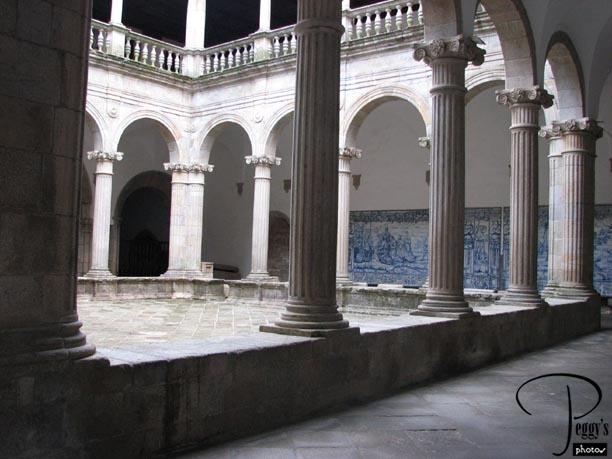
The Se’s Chapter House.

Viseu
Viseu
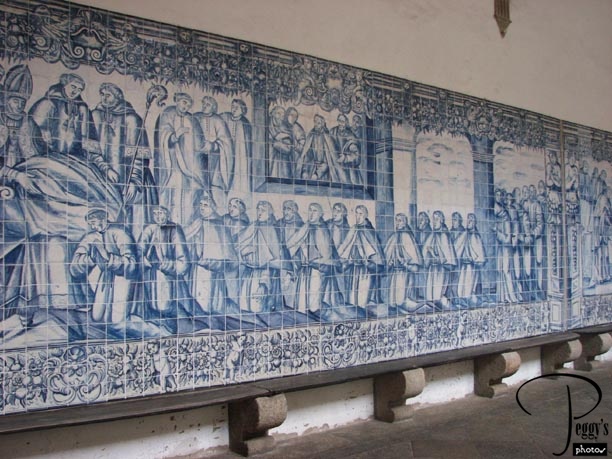
Tile murals on its walls.

Viseu
Viseu
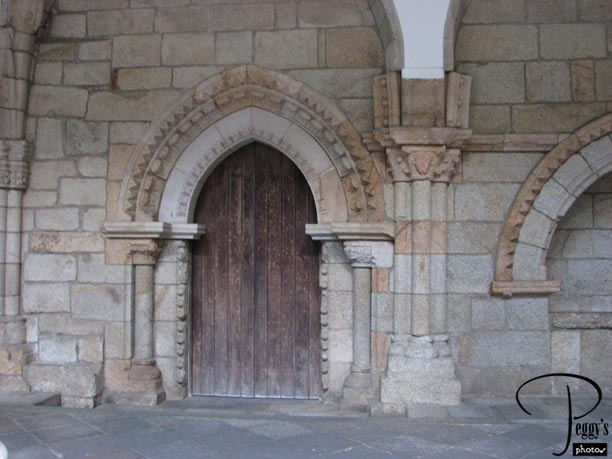
An old door and archway.

Viseu
Viseu
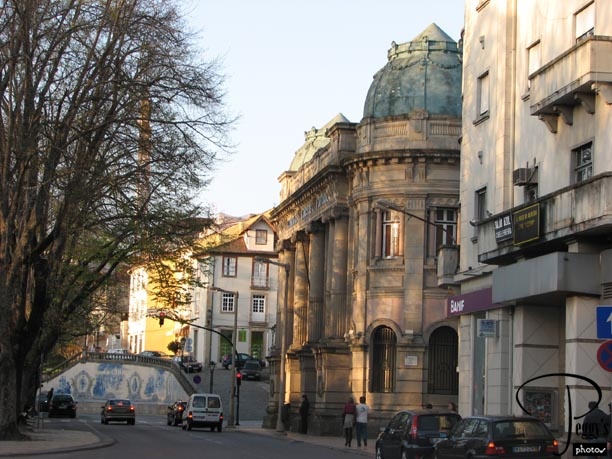
I walked back down the hill to the square near the hotel. Look at the left bottom of the photo for the tiles lining the roadway.

Viseu
Viseu
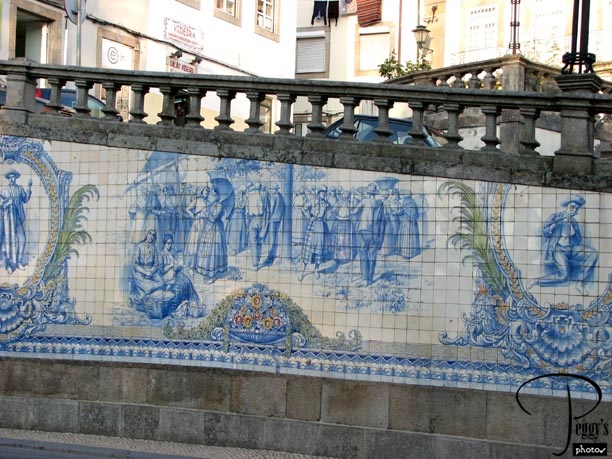
Close–up of the tiles.

Viseu
Viseu
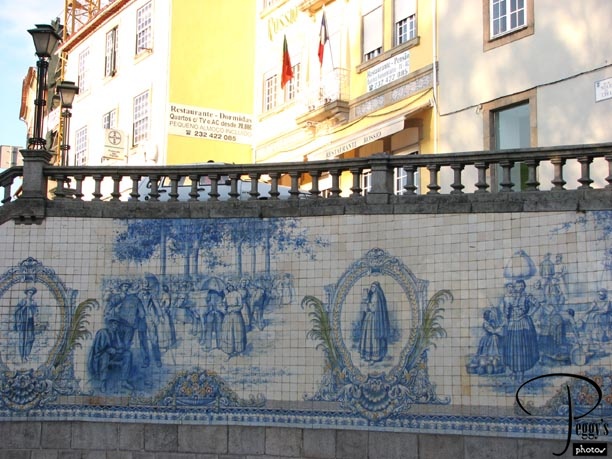
More of the tiles.

Viseu
Viseu
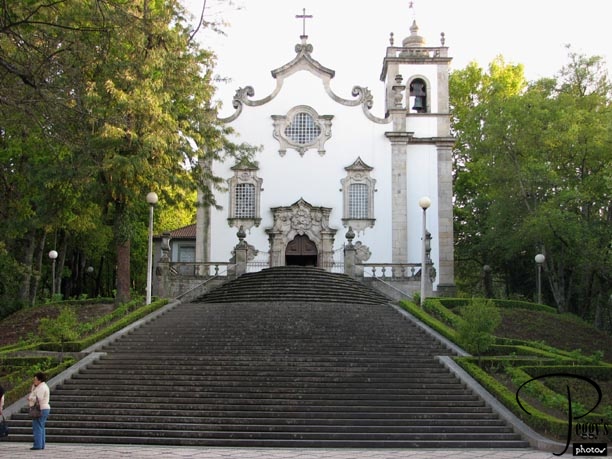
A church next to our hotel––many, many stairs up to it.

Viseu
Viseu
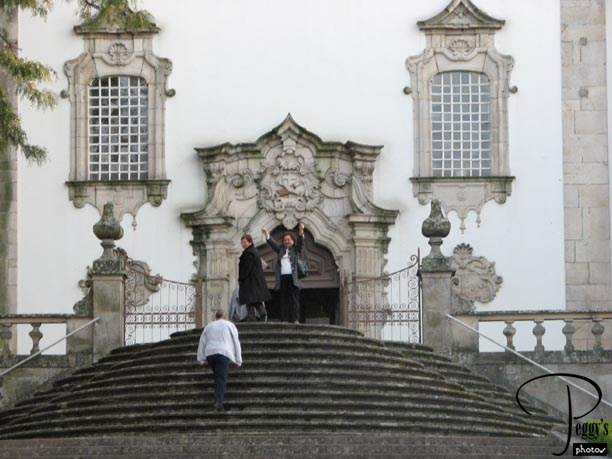
I think the woman in the photo is congratulating herself for making it up all those stairs. We had dinner at our hotel after another very interesting day.
